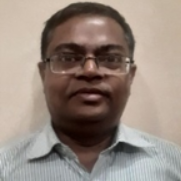
Sudipta Pal
Work place: MOL IT India Pvt Ltd, Kolkata, 700091, India
E-mail: palsudipta1969@gmail.com
Website: https://orcid.org/0009-0004-8471-3346
Research Interests:
Biography
Sudipta Pal was born in Asansol, West Bengal, India in 1969. He earned an M. Tech in Metallurgical Engineering from IIT- Kharagpur, India in 1996, followed by a Post Graduate Diploma in Software Technology from NCST, Mumbai, India in 1999.
He has over three decades of industrial experience. He began his career as a Scientific Officer at BARC, Mumbai and has since worked in numerous reputed IT organizations in various roles and cross-cultural environments worldwide, leading several transformation projects. Currently, he is involved in Data Analytics and Machine Learning projects at MOL IT, Kolkata, India
Mr. Pal holds multiple professional certifications, including PMP from PMI, USA, CSQA from QAI, USA, and CMMi auditor from SEI, Carnegie Mellon University, USA.
Author Articles
An Autoencoder-Based Deep Learning Model for Fractographic Characterization of Tungsten Heavy Alloys
By Sudipta Pal Triparna Sarkar Sourav Saha Priya Ranjan Sinha Mahapatra
DOI: https://doi.org/10.5815/ijigsp.2025.01.04, Pub. Date: 8 Feb. 2025
Fracture surface analysis is crucial in investigating manufacturing failures and material characterization. Traditional manual inspection methods are slow and subjective, prompting the need for efficient automated tools using advanced computer vision techniques. Recent machine learning models for classifying surface fractures show potentials but struggle due to the lack of large, labeled datasets. This study explores the potential application of autoencoders, a self-supervised neural network, to identify unintended fracture surfaces from anomalous manufacturing of tungsten-heavy alloys. The proposed autoencoder-based model achieves 97% accuracy in distinguishing undesirable fracture patterns by analyzing the reconstruction loss of the images, surpassing existing methods. This high accuracy highlights the autoencoder's ability to automatically extract and reduce dimensional features from fracture surfaces effectively. The experimental result obtained on tungsten-heavy alloys demonstrate the model's potential towards developing autoencoder-based automated tools for fractographic analyses across various materials and operational scenarios.
[...] Read more.Other Articles
Subscribe to receive issue release notifications and newsletters from MECS Press journals